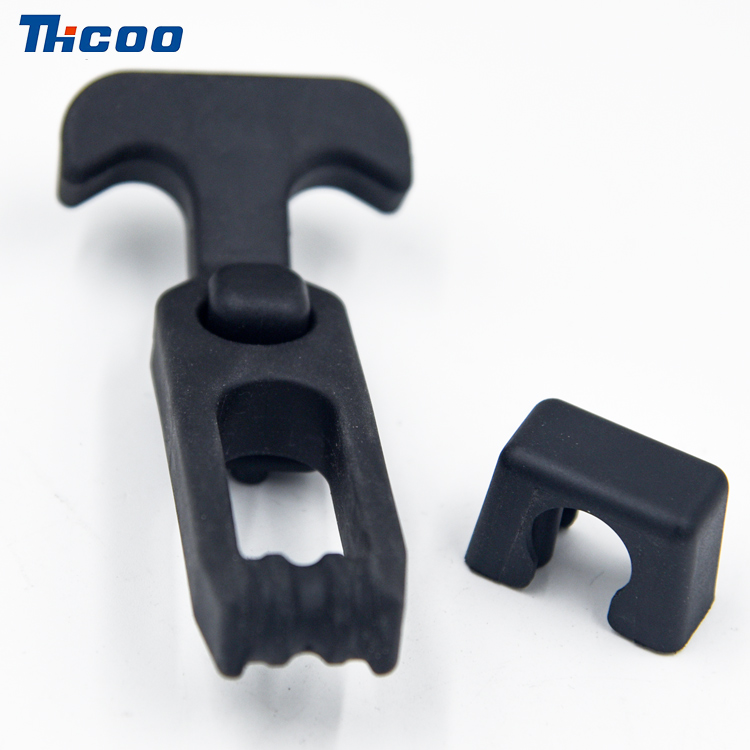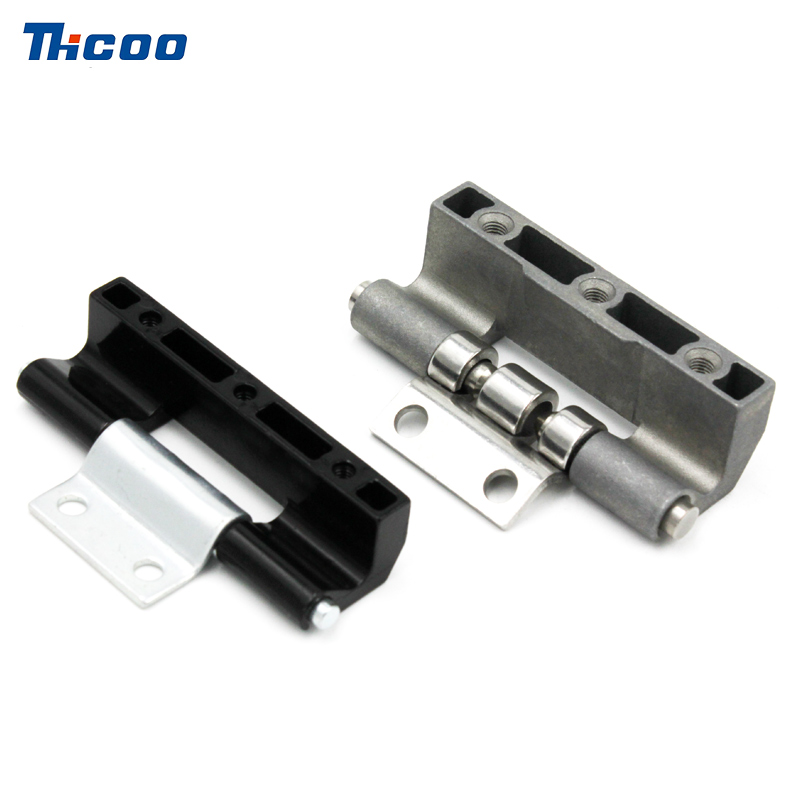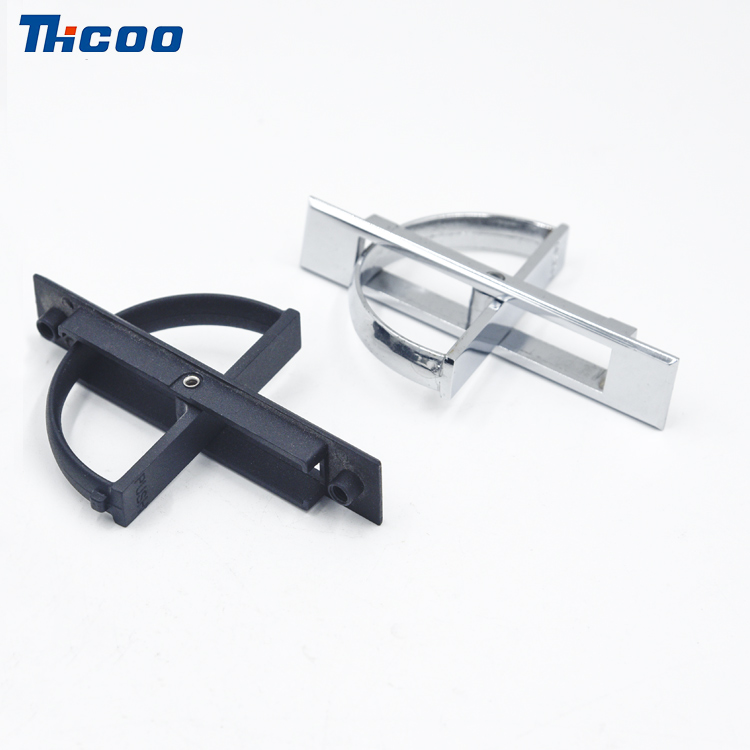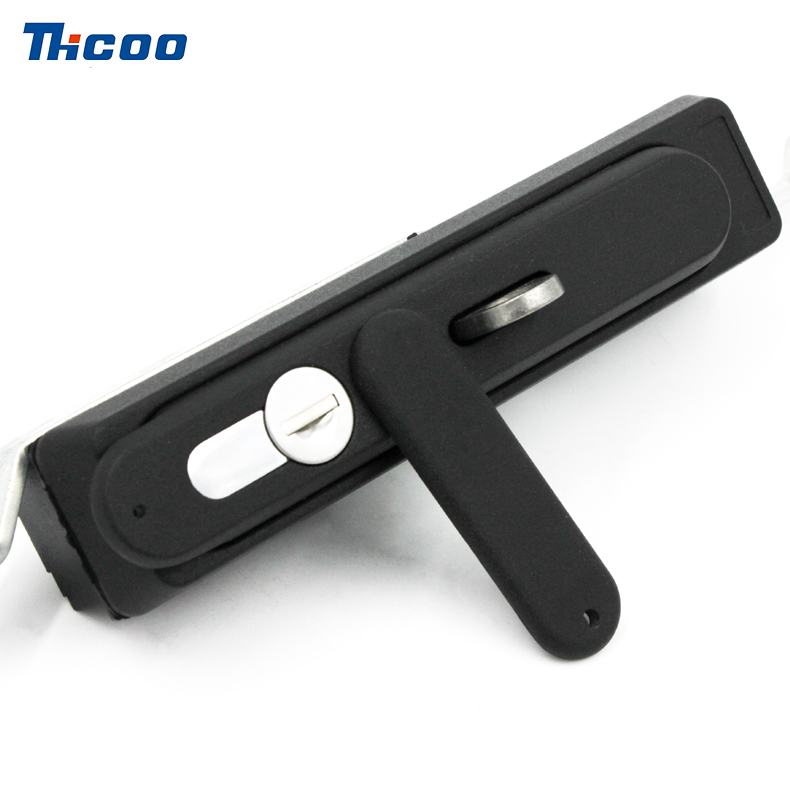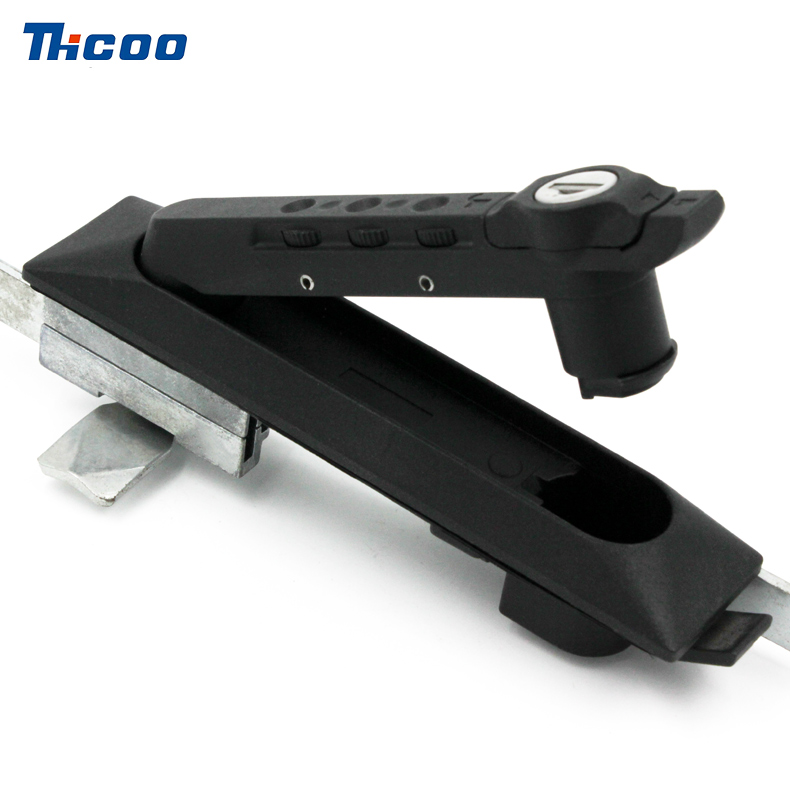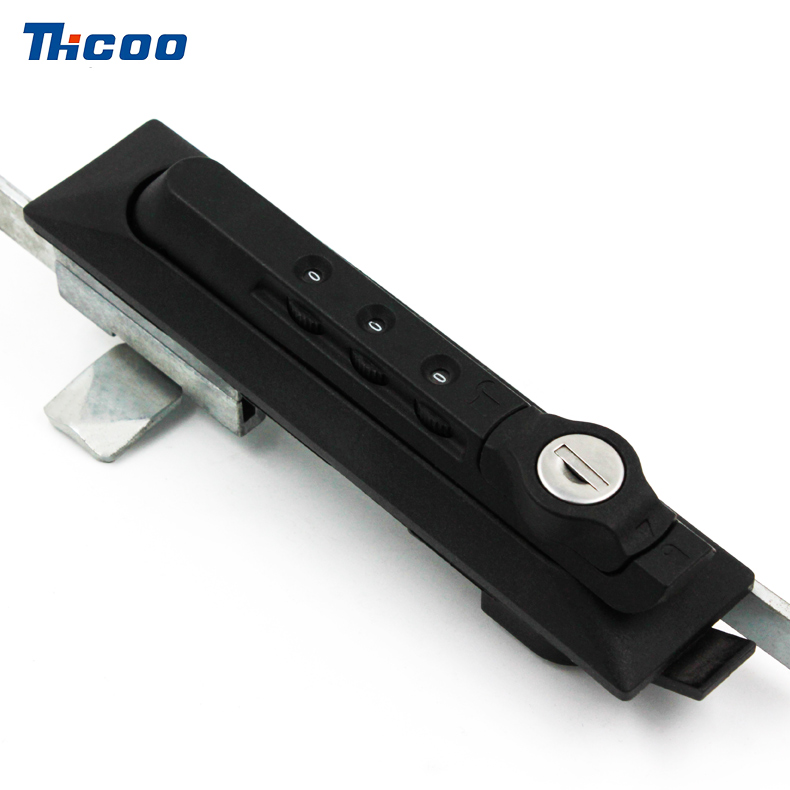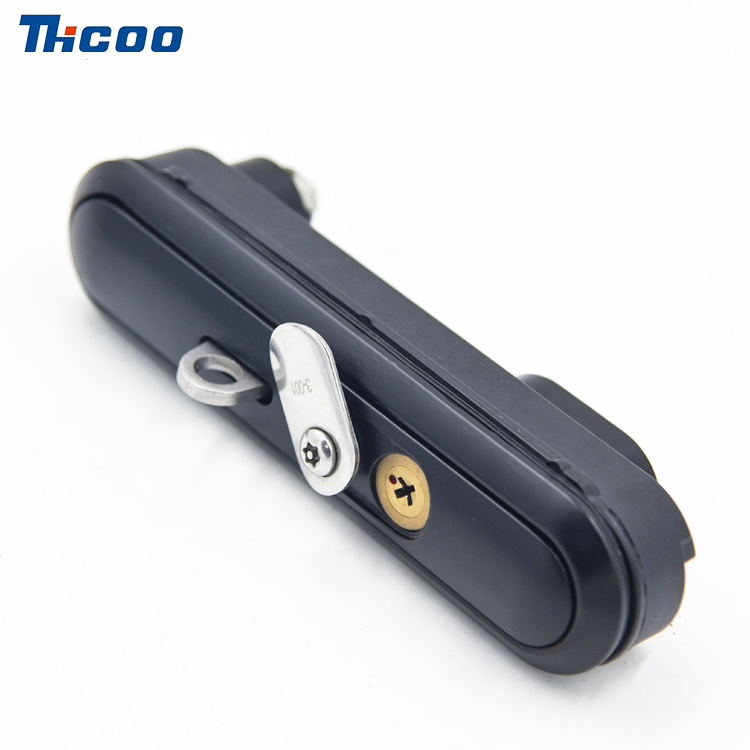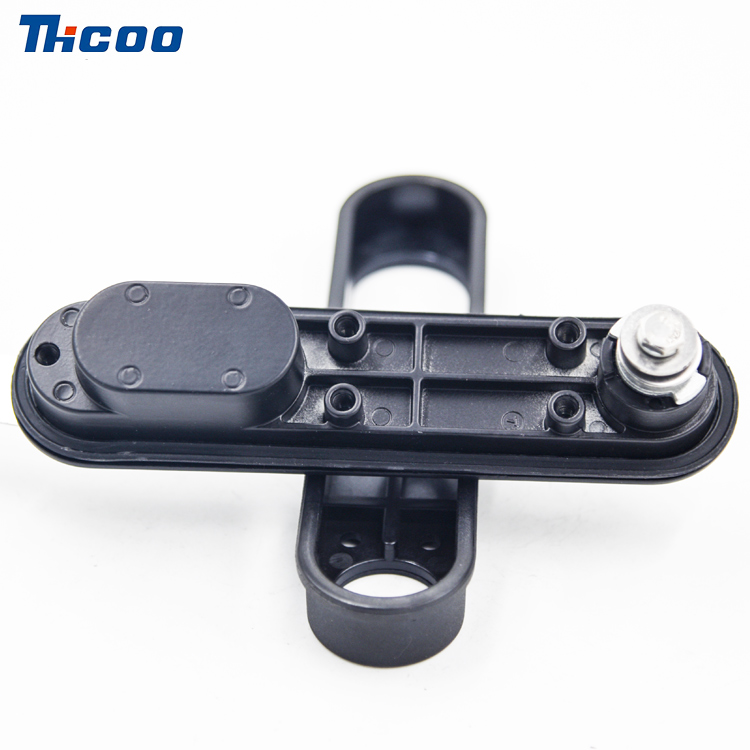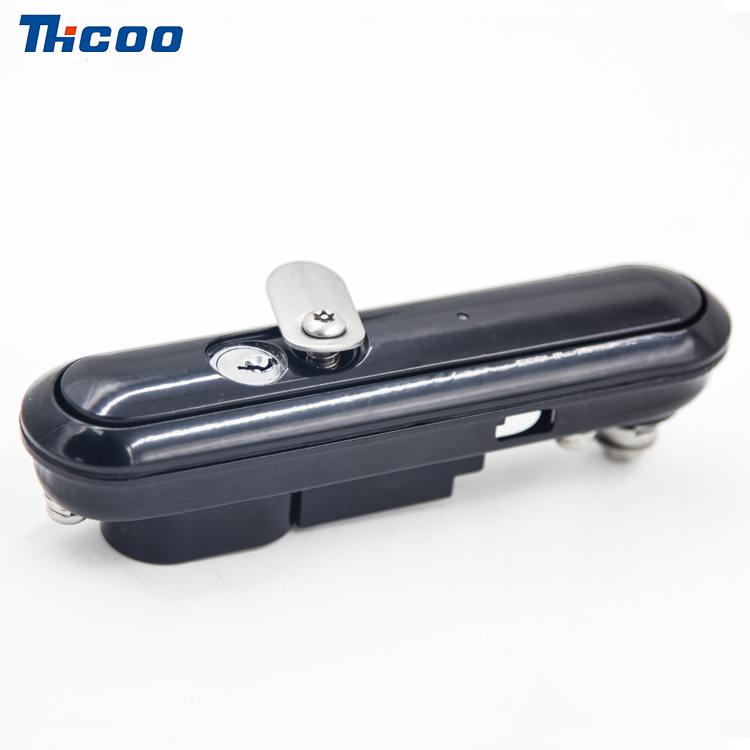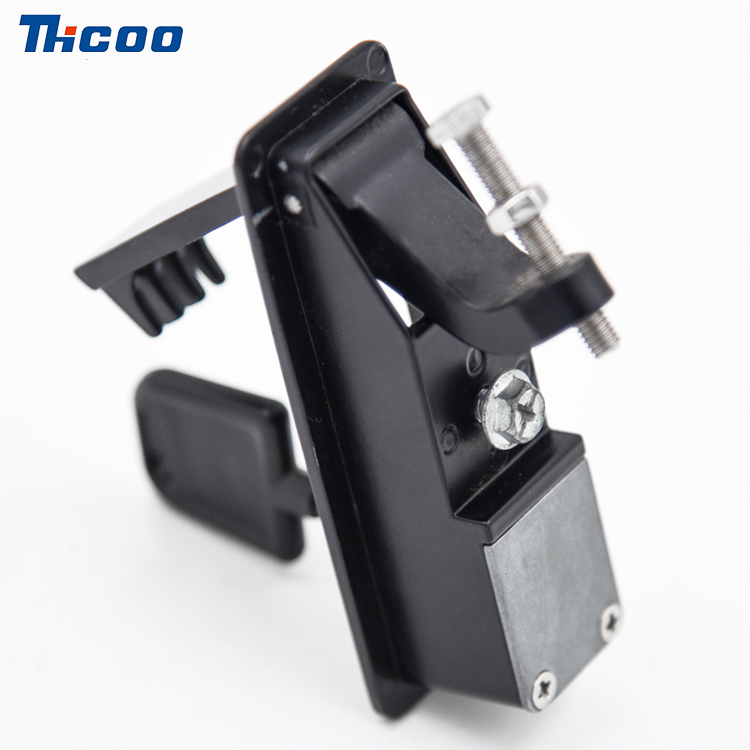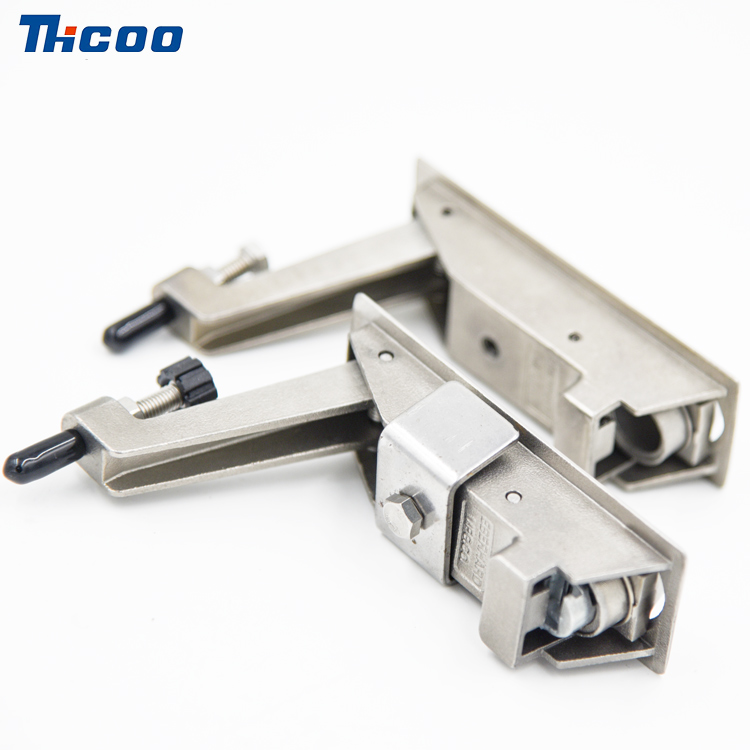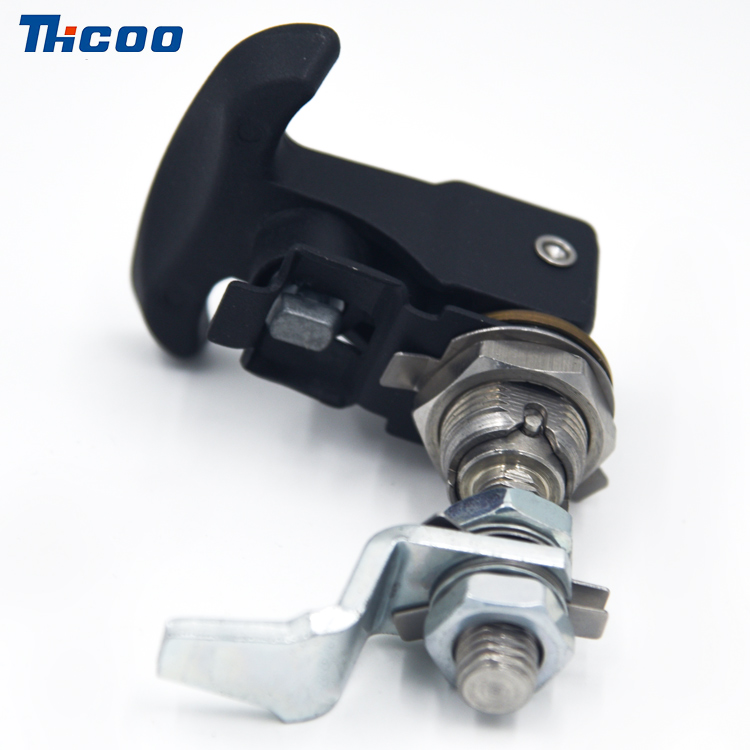Here's how to pick the right door hinges like a pro:
1. Identify the Hinge Type First
Remove one screw: Take a hinge screw to the hardware store – thread type/size must match.
Check hinge design:
Butt hinge (most doors): Rectangular plates + removable pin.
Concealed hinge (modern cabinets/doors): Hidden inside door edge.
Specialty (barn doors, self-closing): Unique shapes (e.g., strap, spring-loaded).
Never assume compatibility: Take photos of hinges + door closed/open.
2. Match Material to Location
Bathrooms/outdoors: Stainless steel (won’t rust).
Decorative interiors: Brass (polished look) or black oxide steel (modern).
Heavy exterior doors: Solid brass/bronze (avoid cheap zinc alloys).
Fire-rated doors: Certified hinges (law requires specific materials).
3. Size Matters – Measure Exactly
Width: Distance between screw holes (usually 3"–5").
Height: Plate length (match old hinge – even 1/8" difference prevents install).
Thickness: Critical for recessed hinges – measure door edge cavity depth.
Pro trick: Trace old hinge on paper as a template.
4. Weight & Usage Determine Strength
Hollow-core doors: 2 standard butt hinges.
Solid wood/metal doors: 3+ ball-bearing hinges (handles weight silently).
Commercial/high-traffic doors: Continuous (piano) hinges or heavy-duty pivots.
5. Consider Functional Needs
Self-closing: Spring hinges (loud) or hydraulic versions (quieter).
Silent operation: Nylon-washered or ball-bearing models.
Adjustability: Concealed hinges allow height/depth tweaks post-install.
Quick removal: Flag hinges (lift-off design).
6. Verify Installation Requirements
Mortised hinges (recessed): Require chiseling – avoid if replacing surface-mount.
Surface-mount: Strap/hook hinges attach directly – no routing needed.
Pre-drilled doors: Match existing hole pattern (non-standard = wood filler + drilling).
7. Aesthetic Checks
Visible hinges: Match finish (satin nickel, oil-rubbed bronze, etc.) to doorknobs.
Hidden hinges: Focus on durability – finish irrelevant.
Period homes: Reproduction hinges (e.g., cast iron for Victorian).
8. Avoid These Mistakes
Ignoring swing direction: Left/right-hand hinges differ (test door swing before buying).
Forgetting screw count: Old hinges may have 4 screws/plate; new ones often have 3.
Overlooking rust risk: Uncoated steel corrodes in humidity – stainless/brass is safer.
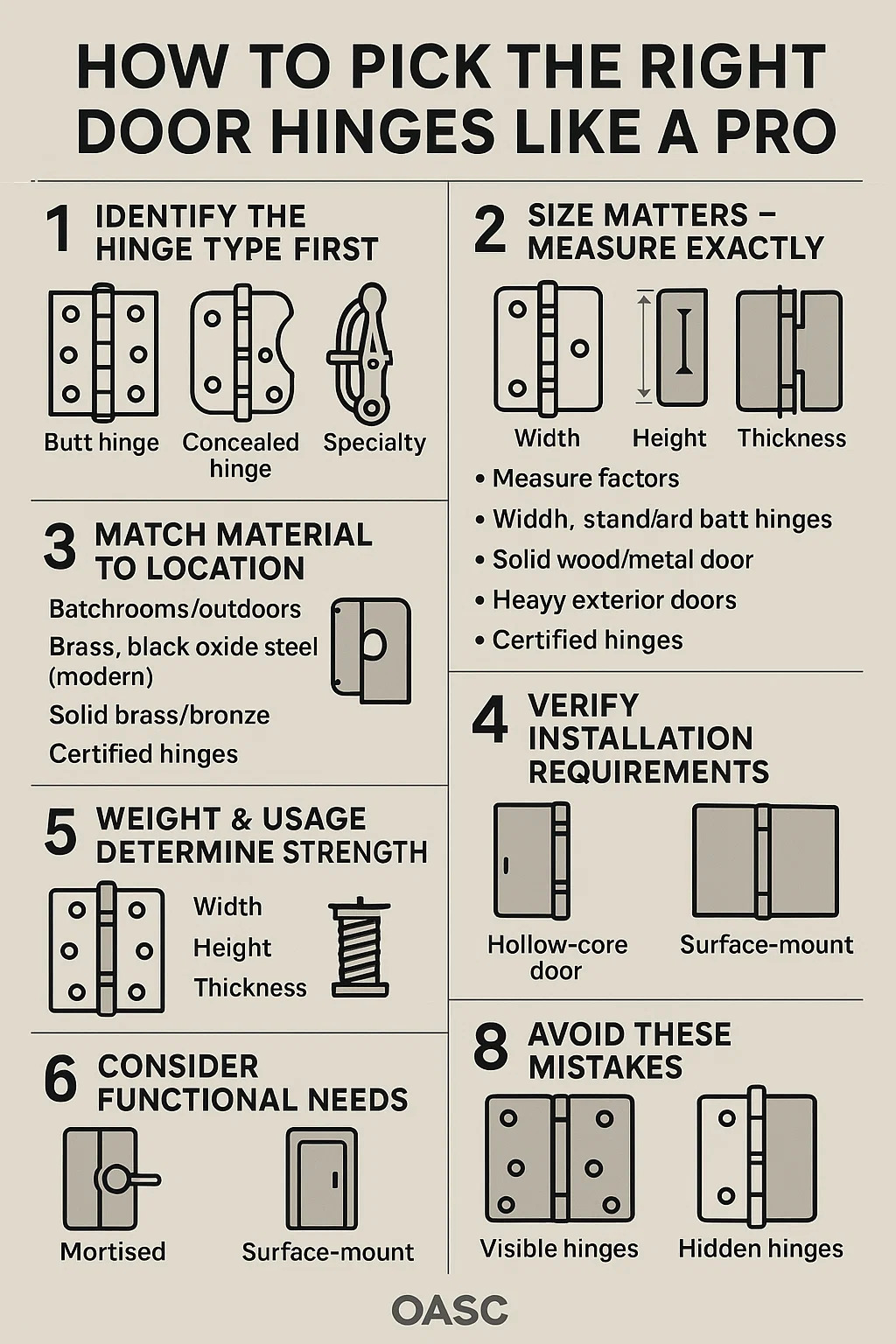

 English
English Deutsch
Deutsch 简体中文
简体中文 languages
languages 

